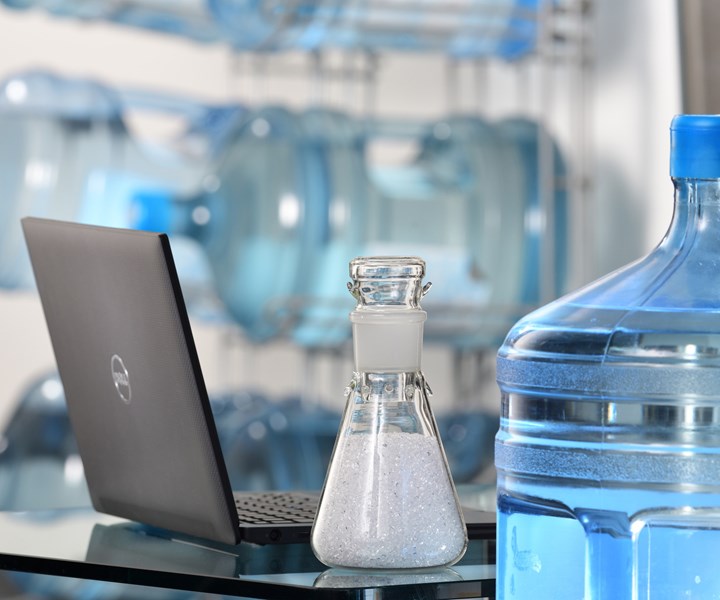Recycling: Continuous-Fiber-Reinforced Thermoplastic Composites with Recycled Polycarbonate
Half of the matrix for the new semi-finished products consists of recycled material originating from the recycling of reusable polycarbonate water bottles.
Lanxess subsidiary Bond-Laminates is currently developing a new product line for its Tepex-branded continuous-fiber-reinforced thermoplastic composites. Half of the matrix for the new semi-finished products consists of recyclates originating from the recycling of reusable polycarbonate water bottles. The primary target application for these products includes laptop covers and housings for smartphones, tablets, e-books and cellphones.
The company says that with these new composites, they are also offering a robust, lightweight and easy-to-process alternative to magnesium die-casting. With a share of around one third of global consumption, the IT and communication technology industry – along with the household appliance and electrical and electronics industry – has for many years been the biggest buyer of polycarbonate.
The new product range is derived from Tepex dynalite, which is used in the mass production of high-strength structural components. The first, already in series production, used material variant comprises a core made from glass-fiber fabric and top layers made from carbon continuous-fiber fabric. A second material type, which is about to be used in the series production of laptop covers, has been developed that contains not only a matrix made from recycled polycarbonate, but also a randomly oriented fiber core made from carbon-fiber recyclate.
The company claims that both of these developments involving recycled materials exhibit standout mechanical properties. Due to halogen-free flame protection, both products pass the UL 94 flame-retardant test from US testing institute Underwriters Laboratories Inc. with the best classification of V-0 with wall thicknesses from 0.4 millimeters.
Large, reusable water bottles are manufactured using high-purity and high-transparency polycarbonate that is approved for use in products that come into contact with food.
The company sees these new product types being used for decorative structural components in sporting goods or automotive components. They have received inquiries from the sporting goods industry about recycled materials.
Bond-Laminates is working on adding additional sustainable fiber-reinforced composites to its material portfolio. One focal point here is the use of recycled material from other post-industrial or post-consumer waste to manufacture the Tepex thermoplastic matrix.

Fifty percent of the matrix for the new semi-finished products consists of recyclates originating from the recycling of reusable polycarbonate water bottles. The primary target application for these products includes laptop covers and housings for smartphones, tablets, e-books and cellphones.
Related Content
-
Optical Sorting for Color Flexibility in Recycled Plastics
Aaron Industries added optical sorting to its operation, expanding capabilities to meet the color needs of customers.
-
Skipping the Pellet for Efficient Recycling in Molded Engineering Plastics Applications
AGS Technology leverages deep experience in molding with recycled engineering materials for automotive and heavy equipment parts.
-
Inside the Florida Recycler Taking on NPE’s 100% Scrap Reuse Goal
Hundreds of tons of demonstration products will be created this week. Commercial Plastics Recycling is striving to recycle ALL of it.















